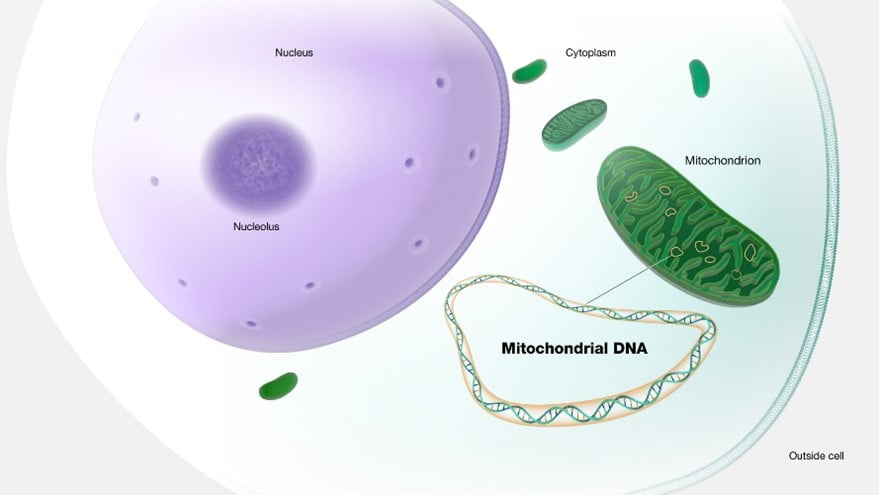Science and Technology
Context: Recently, Hair and bone samples of Shradha Walkar were sent for DNA mitochondrial profiling by police.
- Mitochondrial DNA is the circular chromosome found inside the cellular organelles called mitochondria.
- Located in the cytoplasm, mitochondria are the site of the cell’s energy production and other metabolic functions.
- Offspring inherit mitochondria — and as a result mitochondrial DNA — from their mother.

About DNA mitochondrial profiling:
- It examines biological evidence when nuclear DNA is present in very low quantities or when bones and hair are degraded.
- It determines the mitochondrial DNA (mtDNA) sequence from samples such as hair, bones, and teeth.
- It can be done where DNA extraction is difficult.
- Mitochondria is extracted from the cell and genome sequence is then matched with the family.
- Maternal inheritance of mitochondria allows scientists to compare it with maternally related individuals of a missing person.
- Unique identifications are not possible using this analysis.
Source: Hindustan Times
Previous Year Questions
Q.1) Consider the following statements: DNA Barcoding can be a tool to:
- assess the age of a plant or animal.
- distinguish among species that look alike.
- identify undesirable animal or plant materials in processed foods.
Which of the statements given above is/are correct? (2022)
- 1 only
- 3 only
- 1 and 2
- 2 and 3
Q.2) With reference to the recent developments in science, which one of the following statements is not correct? (2019)
- Functional chromosomes can be created by joining segments of DNA taken from cells of different species.
- Pieces of artificial functional DNA can be created in laboratories.
- A piece of DNA taken out from an animal cell can be made to replicate outside a living cell in a laboratory.
- Cells taken out from plants and animals can be made to undergo cell division in laboratory petri dishes.
Q.3) Recombinant DNA technology (Genetic Engineering) allows genes to be transferred
- Across different species of plants.
- From animals to plants.
- From microorganisms to higher organisms.
Select the correct Solution using the codes given below. (2013)
- 1 only
- 2 and 3 only
- 1 and 3 only
- 1, 2 and 3














